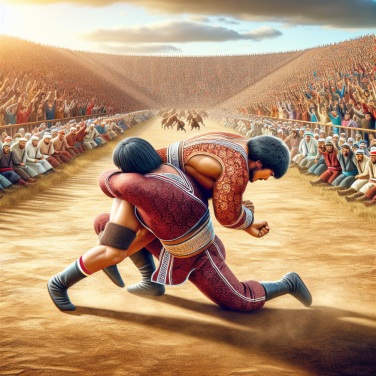Navigating the Terrain: Key Strategies for Winning Obstacle Course Races
Obstacle course racing is transforming from a niche sport into a mainstream fitness trend, challenging even the fit to push their limits and fostering camaraderie among participants. To navigate this challenging terrain successfully, you need a disciplined approach, an adaptable mindset, and purposeful training.
One of the critical strategies needed to win obstacle course races (OCR) is to understand the course. Course knowledge equips you with the necessary intelligence to strategize effectively. Prior to the race, make use of available resources, such as past racers' experiences and course maps when these are available. Knowledge about the approximate mileage, types of obstacles, and elevations can make a significant difference in your mental and physical preparation.
Adopting a comprehensive training approach is another important strategy. Train in conditions that mimic the upcoming race and include strength training, endurance drills, and simulations of specific race obstacles. Focus on grip strength and upper body training, as these are frequently tested in OCR. Don't forget to put significant emphasis on running because even though it's an obstacle race, a substantial portion of the event will be running.
Also, learn to leverage techniques to get you over the obstacles without wasting much energy. Watch and learn from pros and other experienced racers, especially during open races. Many obstacles have specific techniques that make them much easier, and it's crucial that you master these techniques. Go beyond just accomplishing the obstacle and aim to complete them quickly and efficiently.
Nutrition is another vital aspect to consider when preparing for an OCR. Nutrition affects your performance, recovery, and ability to train. Make sure to properly fuel your body with a balanced intake of carbohydrates, protein, and fats. Hydrate properly before, during, and after the race.
Critical to conquering the OCR terrain is the ability to anticipate and manage potential risks. The race's very nature, combining a strenuous workout with a variety of challenging obstacles, poses a range of risks, including sprains, bruises, and hypothermia. Proper gear can provide protection, especially gloves for grip-based obstacles and the right shoes for muddy or slippery terrain.
Mental toughness is what distinguishes OCR champions from participators. Obstacle course racing can be incredibly demanding psychologically. So in your preparation, include mental toughness training. In these races, your mindset can be a major game-changer.
Lastly, recovery post-race is as important as the race itself. Directly after the event, allow your body to cool down.
Read also:
The Thrill of the Ride: An In-depth Look at Water Skiing
The Mindset of a Champion: Mental Techniques for Overcoming Obstacle Course Challenges
Developing the mindset of a champion is a crucial aspect of succeeding in obstacle course racing. Physical fitness is, of course, a key component, but without a disciplined, focused mind, success in the sport remains elusive. Mental obstacles often prove as daunting, or even more so, than physical ones. It begs the question, how can one cultivate mental techniques that can help overcome these challenges?
An essential feature of a champion’s mindset is mental toughness. Simply put, mental toughness is the ability to work hard and respond resiliently to failure and adversity. Champions don’t avoid stress or difficult situations, but rather, see them as opportunities to grow and improve. They understand that the only way to get better is by challenging themselves, pushing beyond their comfort zones, and embracing the potential for failure. Mental strength training must go hand-in-hand with physical training to succeed in obstacle course racing.
A majority of the time, your body is capable of far more than you realize. However, the mind often gives up before the body does. Hence, learning how to control your thoughts is essential. A useful technique in boosting mental toughness is visualization. This strategy involves developing a mental picture of successfully completing the course or overcoming a particular obstacle.
The next crucial attitude is to harbor a no-quit mindset. Even when the going gets tough, deciding to stick it out and keep pushing is what differentiates the victors from the crowd. This attitude is about commitment and persistence. Often it involves setting small, manageable goals throughout the race to keep pushing forward, whether it's making it to the next obstacle, or just focusing on putting one foot in front of the other.
Moreover, training the mind to remain focused can significantly improve performance in obstacle course racing. Distractions come from all angles on the course – competitors, spectators, and even internal thoughts. One powerful technique is mindfulness, which involves becoming aware of your current experience, your body, and your surroundings. This helps to stay grounded, objective, and avoid becoming overwhelmed.
Lastly, cultivating a growth mindset is central to dealing with failures and setbacks. Understanding that each failure is not a defining moment, but a lesson needed for growth, makes bouncing back easier. Reflecting on what went wrong and planning how to improve for the next race can turn a setback into a set-up for future success.
In the end, obstacle course racing is about more than just fitness, speed, and strength; it's about mental grit, determination, and resilience.




